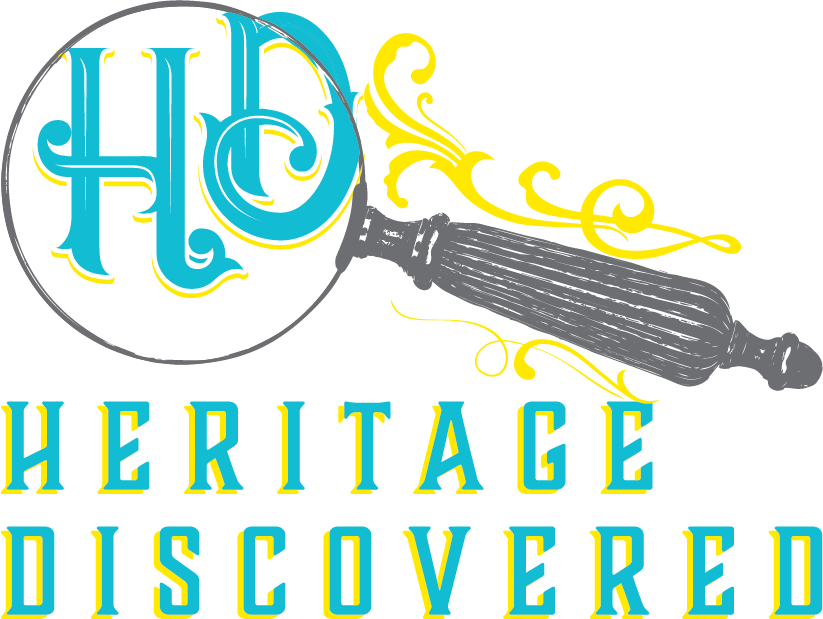7 Tips For Creating A Successful Genealogy Research Plan
*This post may have affiliate links, which means I may receive commissions if you choose to purchase through links I provide (at no extra cost to you). All opinions remain my own.
Updated August 16, 2022
I confess, for years, I didn’t use any genealogy research plan. I’d know what I wanted to find and some general ideas on where to search for it, but I never put a plan down on paper.
I wanted to get busy researching! But really, all that did was cost me time in the long run.
I didn’t think strategically about how to track down what I wanted or what places would be the best to start with.
I would just send off letters and make phone calls around New England (yes, this was a long time ago) hoping to find some answers.
Eventually, I did get a lot of the answers I was looking for. Looking back, I’m pretty sure I could have discovered them faster if I had slowed down and thought things through.
I had never even heard of a research plan. I was making things up as I went because I was still learning and didn’t know any better.
As Maya Angelou said, “Do the best you can until you know better. Then when you know better, do better.” Now I know better, and I’m here to share that making a research plan should be a first step when starting to seek out anything.
In this article, I’ll discuss the reasons why you need a plan, steps for crafting a genealogy research plan, and where to keep them once you’ve made them.
Related posts:
6 common genealogy mistakes and how to avoid them
How to Organize Your Genealogy Files With Binders
6 Google Search Tips For Genealogy That Will Save You Hours Of Time
Why you should have a genealogy research plan
Like making genealogy goals, research plans keep you organized and focused.
It forces you to stop and think carefully about what you’re looking for and the best places to find that information, rather than looking at whatever comes up in a search. You’ll save time and effort from looking in the wrong places or for sources that don’t exist.
It lays out the steps you need to follow, like a checklist. Let’s be honest, sometimes it feels like the event or names you want to discover is like searching for a needle in a haystack.
By figuring out the different places you need to search right from the start, it can feel easier, even if you have a long list of resources to check. This lets you to be more efficient and avoid procrastinating because it feels too overwhelming.
A blueprint also guides you through reviewing the information that you have and analyzing it to lead you to the best sources to answer your questions.
Coming up with a genealogy research strategy means more effective research, which means you can find the answers to your research questions faster and with less frustration.
Related posts:
Solve Your Genealogy Brick Wall: Review and Analyze Your Research
Solve Your Genealogy Brick Wall: How To Evaluate Your Sources
Solve Your Genealogy Brick Wall: 10 Ways To Widen Your Research Net
Solve Your Genealogy Brick Wall: How To Research A Last Name In An Area
7 steps for developing a genealogy research plan
Developing a research plan doesn’t have to be complicated.
If anything, it may inspire you by seeing how many possibilities there are out there to search.
Here are 7 basic steps to crafting a genealogy research plan and how to use it.
1) Identify your research goals. Do a brain dump of all your goals and then prioritize them. Take your top priority and start to build a plan around it. You want to be specific about what you want to find, like to find someone’s parents. It’s also important to include some identifying information in the question to guide you and to sort out people with similar names.
Don’t make the question too vague, like “find anything on Patrick Burke”. Getting specific helps you focus on the top sources to look for, which we’ll discuss below.
Here are some sample genealogy research questions I’ve made:
Who was the first wife of Samuel Jones, born circa 1811 in Massachusetts, and who first lived in Lebanon, Grafton County, New Hampshire and later Woodstock, Windsor County, Vermont, and died 19 March 1887 in Woodstock?
When and where did William Slattery, baptized 20 January 1840 in Gambonsfield, County Tipperary, Ireland and married Catherine Lee 21 January 1866 in Northampton, Hampshire County, Massachusetts, die?
Where was Philippe Couture, born 7 September 1861 in St-Christophe, Arthabaska, Quebec, Canada, married to Emma Perusse in 1882, living between his immigration from Quebec in 1881/1882 and his death in Greenfield, Franklin County, Massachusetts in 1935?
2) Write down what you already know about the person. Making a timeline of all the known events in their life helps both refresh your memory about their known background information and spot gaps in your research.
For example, for my Philippe Couture example, I’d include:
Born 7 September 1861 in St-Christophe, Arthabaska, Quebec, Canada
Parents were Dominique Couture and Leontine Vermette
His children were Philip Albert (1883-1883), Arthur Philip (1884-1967), Albert Frank (1887-1942), and so on
Philippe was living with his parents in St-Christophe in 1871 and 1881
Married Emma Perusse, daughter of Pierre Perusse and Philomene Veillette, on 13 June 1882 in Concord, Essex, Vermont
Died 14 December 1935 in Greenfield, Franklin, Massachusetts. Was a widower.
For the William Slattery example, I’d note:
Baptized 20 January 1840 in Gambonsfield, County Tipperary, Ireland
Parents were William Slattery and Catherine Casey
Living with parents in Deerfield, Franklin County, Massachusetts in 1865
Siblings were Thomas (ca. 1832-1908), John (ca. 1839-1874), etc.
Married Catherine Lee, daughter of Terrence Lee and Honora Sullivan, on 21 January 1866 in Northampton, Hampshire County, Massachusetts
Include citations so you know if it’s verified or something you still need to prove.
The look through the known facts. Do any conflict with each other? Do you need to resolve the conflicts to move forward?
What information doesn’t have a source? If something doesn’t have a source, how reliable is the information and where can you dig up evidence to back it up?
3) Write down what types of documents will answer the question. For example, if you’re looking for the names of someone’s parents, marriages and death records, censuses, obituaries, wedding announcements, and some immigration records would all be useful.
If you want to find someone’s death, obituaries and other newspaper articles, church and death records, city directories, and probates are good starting places. The best sources will depend on the place and time your ancestor lived.
For Philippe, censuses, directories, his death certificate and obituary, newspapers, and naturalization, land, tax, and church records could all be helpful.
For William, censuses, directories, vital records, probates, obituaries and other newspaper articles, and cemetery, church and court records might answer the question of who his kids were and where were they born.
4) List out all the places you might find these sources – online and offline.
Key questions to ask are what records exist for that time and place? Did any county boundaries change? When did vital records begin for that area?
Were there any laws at the time that might impact what you’re looking for? For example, if you’re researching a woman, could she own land?
Again, be specific. If it’s online, write out the database collection. If it’s offline, name the library, courthouse, or other repository to explore. Include any call numbers or other identifiers.
Keep in mind, you may need to do some “sideways” collateral research to find answers. A record with direct information about your research may not exist for the person you’re looking at, but could for one of their siblings.
5) Prioritize the resources. No matter how specific your question or how long or short your list of potential sources is, organize them by which records are most likely to give you the best results and use those first.
The best resources may not be online. If you can’t access them personally, like they’re in a courthouse across the country, you may still be able to get a copy of them by calling the repository or getting someone local to make copies for you.
6) Get researching (the best part)! Use the plan and the prioritized resources as a guide and start searching.
As you find records, evaluate each one. Does it answer the research question? Is it reliable or do you need more information or sources to be sure it’s correct?
Track the sources that you look at on a research log. You can also blend your plan and log together in one document if that works better for you. A research log doesn’t have to be fancy or complicated. Noting what you used is especially important for when you don’t find something, so you don’t spend time looking at that resource again in the future.
7) Review and update your plan as needed. Genealogy research plans should be living documents until your answer is found.
You may come across something in one source that changes everything, like a new locality to look in. The resources you originally intended to look at may change based on new things you find.
As you find and evaluate each resource, take a look at the plan and decide if you need to change course. Then start at step 4 again with listing the best possible resources and where you might find them and continue your search.
Related posts:
12 Tips For Getting Back Focus And Motivation In Your Genealogy Research
7 Simple Steps To Creating A Genealogy Timeline (And Why You Need One)
Museum Archives: How To Use This Unique Resource In Your Research
Where to keep your research plan
There are several methods you can use to create and store your research plans.
Print them out and file them with your other family history documents for that ancestor so everything you need for them is in one place.
Keep them in the cloud. Google Docs, Evernote, and One Note are all good places to store your plans so you can access them from anywhere.
Use a project management app, like Asana (my favorite) or Trello. Project management tools allow you to easily check off steps as you’ve completed them and are also available in the cloud to use when you’re on the go.
Related posts:
How to Strengthen Your Cemetery Research Skills to Find More Clues
11 of the Best Websites for Free Ship Passenger Lists
What To Know About Alien Registration Files And Where To Find Them
How to Use Civil War Pension Records in Your Research
If this post was helpful, please consider “buying me a coffee”. Tips through Ko-Fi help me create more content like this for you! Thank you for supporting my small business!
Final thoughts
Developing a genealogy research plan is a way to search in an efficient way.
Plans help you strategically think through where you need to search, and how to prioritize resources so you can avoid overwhelm and frustration from going in circles.
Research plans also help you to review and analyze the information you already have so you can find the best potential resources for your research goal.



